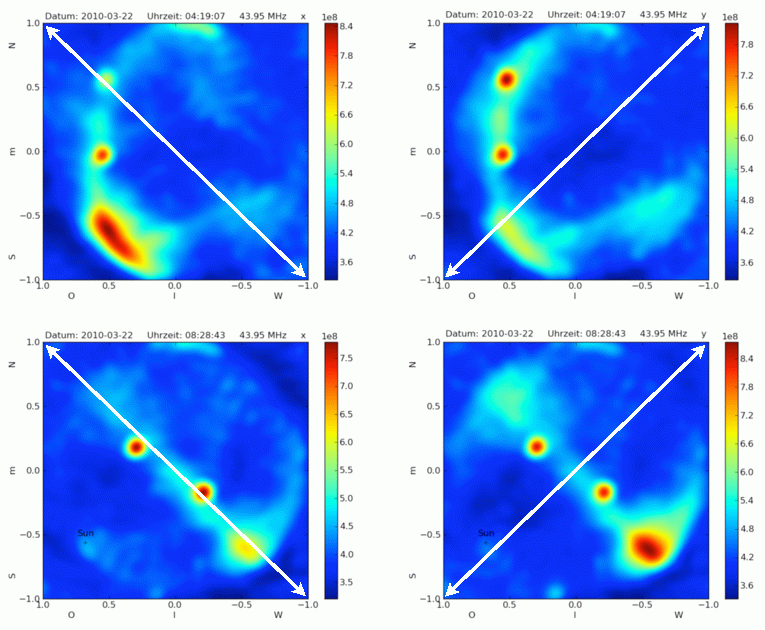Daily Image
20-04-2010Is the orientation of LBA dipoles correct?
| Submitter: | Jana Köhler, Matthias Hoeft, Olaf Wucknitz |
| Description: | Lofar observations including international station showed more power in the XY and YX correlations between Dutch stations and Tautenburg, than in the XX and YY correlations. This was interpreted as a possible flip of polarizations on either side. However, there were doubts about this interpretation, because differential Faraday rotation can cause similar effects. Later it was found that all German stations seem to have the same polarization orientation which is inconsistent with the Dutch one. The most stringent way to test the orientation of the x- and y- dipole antennas independently of Faraday rotation is to follow the intensity of the Milky Way on the sky. For radiation which comes from sources close to the horizon the sensitivity pattern of the dipole varies significantly. The dipole is most sensitive when the source is perpendicular to the dipole. The pictures above, measured with the Tautenburg station, show nicely that the apparent luminosity of the Milky Way depends crucially on the dipole direction. The left panels show the sky map measured with the x-dipoles. The white arrows indicate the orientation of the dipole. The right panels show the same for the y-dipoles. Apparently, the orientation of the dipoles is correct. This nicely confirms the hypothesis found recently: The polarizations of all Dutch stations are labelled incorrectly for the LBAOUTER configuration but correctly for LBAINNER. This is a result of the way the antennas are connected to the RCUs. It will be corrected in software. |
| Copyright: | TLS Tautenburg |
| Tweet |  |
